In Colombia, Shade-Grown Coffee Sustains Songbirds and People Alike
By Gustave Axelson
Antioquia is Colombia's biggest coffee-producing department, and it's also a hotbed for overwintering Blackburnian Warblers. Photo: Guillermo Santos. October 11, 2016From the Autumn 2016 issue of Living Bird magazine. Subscribe now.
Haga clic aquí para leer en español.
Early one morning last January, I drank Colombian coffee the Colombian way—tinto, or straight dark.
I sipped my tinto while sitting on a Spanish colonial veranda at Finca Los Arrayanes, a fourth-generation coffee farm and hotel deep in northwestern Colombia’s Antioquia region. The sun had not yet risen above the high ridges of the northern Andes. In the ambient gray predawn light, the whirring nocturnal forest insects were just beginning to quiet down.
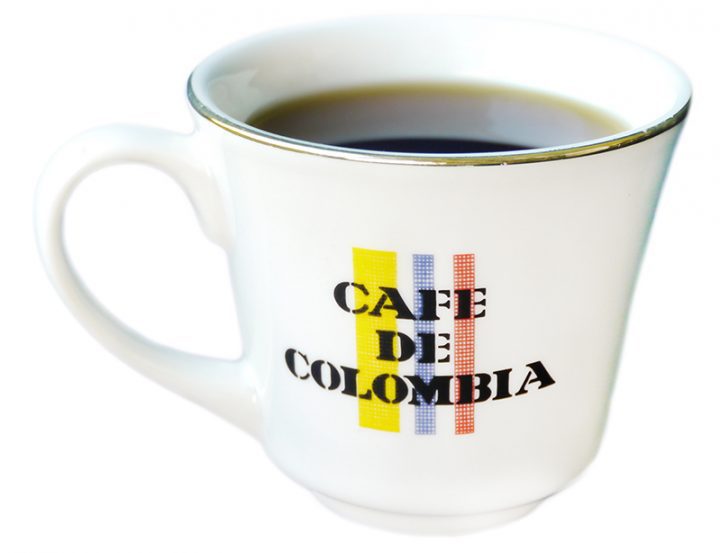
My senses of taste and smell were consumed by the coffee, which was strong and bold in a pure way, the flavor flowing directly from the beans, not a burnt layer of roast. But my eyes were trained on a small wooden platform that held a couple of banana halves. The first bird to visit was an Andean Motmot, one of Colombia’s many Alice in Wonderland–type fantastical birds. It sported a green-and-turquoise coat and black eye mask, and it was huge—longer than my forearm, with a long tail with two circles at the end that swung rhythmically from side to side like the pendulum of a clock.
The motmot flew away and I took another sip of coffee to be sure I didn’t dream it. Another bird soon landed on the platform to pick at the bananas. This one was yellow, though Colombians call it tangara roja, because males of this species are completely red. In its breeding range, birders from the Carolinas to Texas know it as the Summer Tanager.
For more than 5 million years, a rainbow of Neotropical migrant birds (tanagers, warblers, and orioles) has been embarking on epic annual migrations from breeding grounds in North America to the New World tropics. In Colombia, these wintering areas are a lot different now than they were just 50 years ago. From the 1970s to the 1990s, more than 60 percent of Colombian coffee lands were cleared of forest as new varieties of sun-grown coffee were planted. During that same period, populations for many Neotropical migrant species plummeted—a drop many scientists say is related to deforestation of the birds’ wintering areas across Central and South America.

An Andean Motmot, an endemic bird species of humid mountain forests in the Andes. Photo by Guillermo Santos. 
Top: This female Summer Tanager likely migrated to Colombia from somewhere in the southern United States. Bottom: A Blackburnian Warbler in a coffee bush. Photos by Guillermo Santos.
And yet, coffee doesn’t require deforestation. When the Dutch introduced coffee to the New World in the 1700s, it was a forest-floor crop grown under an overhead tree canopy. Now some Colombian farmers are going back to the old ways in the belief that trees make for higher-quality coffee. They’re willing to grow coffee in a forest setting, if that’s what the coffee drinker, people like me, is willing to pay for. The American consumer directly affects how coffee is grown in Colombia, because the U.S.A. is Colombia’s biggest coffee customer—importing more than $1 billion in beans every year.
For a week last winter, I trailed Colombian coffee back to its source, tagging along with a team of Cornell University researchers as they studied the biological and socioeconomic effects of shade-grown coffee. I came away with a supreme appreciation for the power of the coffee bean—to provide for the livelihood of fathers and mothers and children, and to create the financial roots for a patch of trees that will play host to all manner of warblers in winter.
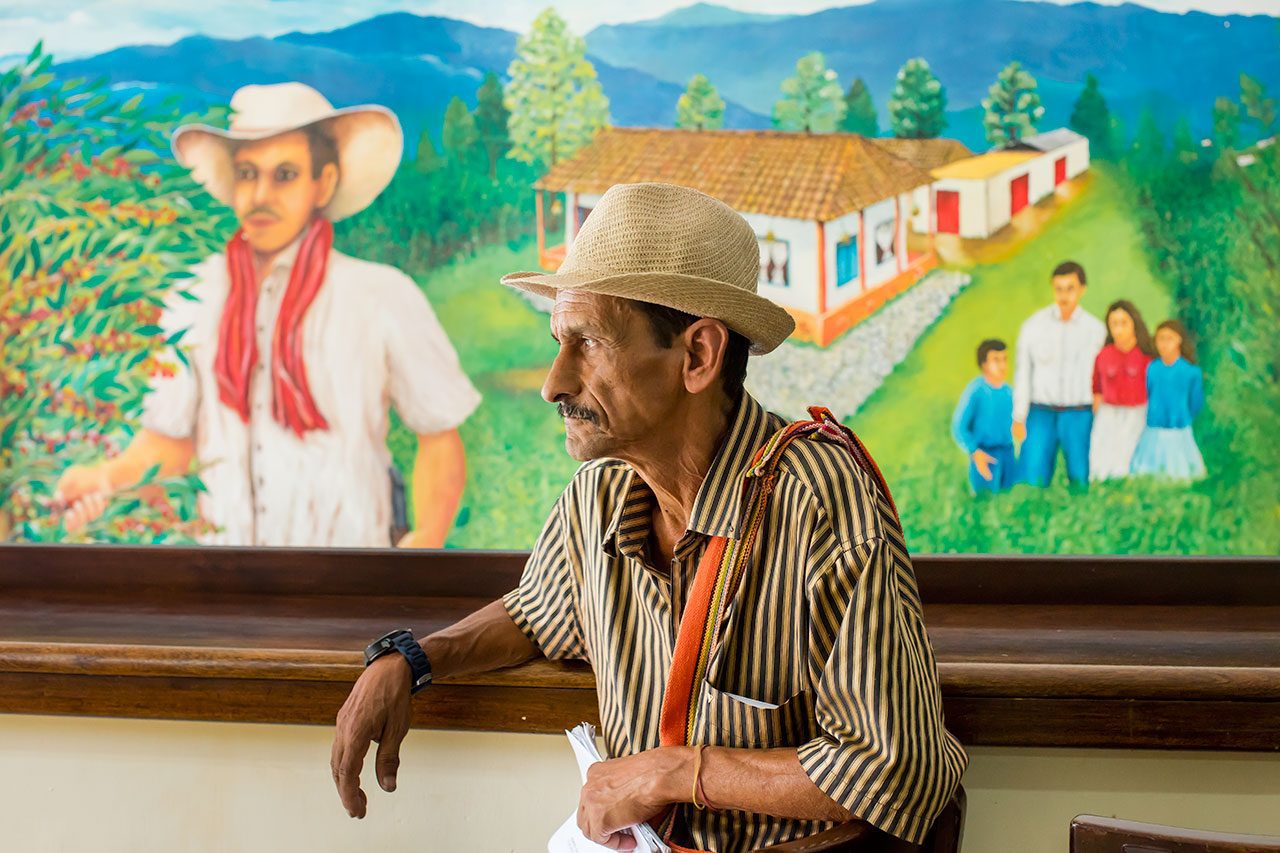
Unfortunately, much of the shade coffee has been converted to sun coffee where the trees are removed. When we lose those trees, we’re loosing the services that trees provide: preventing erosion and landslides, protecting water, adding nutrients to the farm, storing carbon, and of course, we’re also loosing the habitat for birds and for other species.
[Nick Bayly] If we don’t have natural habitat within the coffee landscape, we don’t have these bird species. [Amanda Rodewald] This morning is a great example, because we were out here on a farm where there are over story trees. There are shrubs. There are also other crops that people are eating and that rich mix, along with some over story trees provided habitat for a large number of migrants. We heard Tennessee warblers and Blackburnian, and Summer tanagers, Black-and-white Warbler, all of these different species were here. And the more we can try to provide incentives to farmers by supporting those kinds of practices, we’re both contributing to bird conservation, but also to supporting families and communities.End of Transcript
“This is why I love polyculture.” Amanda Rodewald—director of Conservation Science at the Cornell Lab of Ornithology—smiled as she snagged an orange out of a tree for a snack. It was another predawn morning, her third in a row, and she had already burned through her quickie 5 a.m. breakfast of arepas (Colombian corn tortillas), huevos, and queso. As she finished tying her last mist net to a freshly cut bamboo pole, she peeled the orange and chucked the skin into the coffee bushes that surrounded her. Avocado and plantain trees formed a second layer of foliage about 10 feet higher, and above that a layer of canopy trees stood five stories high. This was a coffee farm, but there was a whole lot more than just coffee growing here.
After the last wedge of orange, Rodewald walked down a steep, rocky path to rendezvous with her collaborating biologist on this morning, Nick Bayly of the Colombian conservation science group Selva. The team had laid out a gauntlet of these fine-as-spiderweb mist nets to catch a few migrants to be weighed (to see if they’re gaining grams for the journey back north in spring) and outfitted with a leg band (in hopes they will be recaptured in a future year, to track survival). For now, we sat and waited under the trees to see what flew into the nets.

Rodewald studies shade-coffee farms in Antioquia, Colombia. This one has three levels of forest-like vegetation— coffee bushes in the understory, plantain trees at a middle level, and an upper level of canopy trees. 
Rodewald and Bayly make their way though a shade coffee farm to set up a mist net. 
Rodewald and Bayly set up a network of mist nets in a shade coffee farm. The team uses freshly cut bamboo poles to string up the nets. 
Bayly retrieves a Blackburnian Warbler from a mist net and inspects its wing feathers to determine its age. 
Rodewald carefully removes a Mourning Warbler from a net. 
A Mourning Warbler is examined after being netted in a row of coffee plants. “This really is a coffee bird,” said Bayly. "It actually creeps around in the coffee plants.” 
Rodewald's research shows that Neotropical migratory songbirds find enough food in a shade coffee farm to maintain a healthy body mass, which puts them in good shape for a successful migration back north in spring. Photos: Guillermo Santos.
For more than a decade, Rodewald has been researching how Neotropical migratory birds benefit from spending their winters on coffee farms with trees. She began in Venezuela in 2005, where she and her team documented the first evidence that American Redstarts and Tennessee and Cerulean warblers can gain weight by overwintering on a shade-coffee farm, which means they’re in good condition for the spring migration back north.
But by 2008, Venezuela under Hugo Chávez had become too hostile as a research environment for her to continue. So she moved over to Colombia, another rich coffee and bird zone. Today Rodewald supervises six graduate students through her faculty position as the Garvin Professor of Ornithology at Cornell University, and six more scientists at the Cornell Lab, all working across 11 countries in Central and South America on a variety of projects that collectively get at the core question of how working landscapes (coffee, cacao, or other crop farming) can provide habitat for birds and support biodiversity.
But she’s most at home in the field, where she wore her hair back in a pony tail that bobbed along behind her as she bounced from mist net to mist net, checking for any catches.
“Amanda, we’ve got one,” Bayly called from one of the nets. We rushed over to find a Smooth-billed Ani that looked like a crow with a parrot’s beak. Bayly was none too happy to untangle it: “They bite. They’re smelly. They’re just generally unpleasant.”

A woman enjoys a pintado (coffee with a splash of milk) in a coffeehouse in the village of Andes. 
Locals enjoy an afternoon tinto, or black coffee, in the town square of the village of Andes. 
Coffee is tested in the tasting laboratory of the De Los Andes Cooperativa to make sure it meets specialty standards. 
Cornell economist Juan Nicolás Hernandez-Aguilera is conducting interviews at coffee farms to learn if and how farmers are benefitting from growing specialty coffee sustainably. 
Coffee is harvested by hand on the small farms in Antioquia. Photos by Guillermo Santos.
No migrants yet, so Bayly laid a smartphone underneath a mist net to broadcast the whinnying trill of a Ferruginous Pygmy Owl. It’s a field method used under a strict research protocol, only when needed to bring birds out of the bush. Suddenly, the scene erupted into avian chaos. Birds that were nonexistent moments ago now appeared and fervently chipped as they zipped about and dove into the coffee bushes, searching for a predator to drive off. Glassing the first responders through my binoculars, I rattled off a rapid succession of warblers—Golden-winged, Cerulean, Blackburnian, Tennessee, and the Black-and-white Warbler that Colombian coffee farmers call cebrita, or little zebra (see the morning’s full eBird checklist).
Within minutes there was a bevy of bird bundles wrapped up in the nets. Rodewald and Bayly quickly worked the line like a couple of short-order cooks, untangling birds and popping them into cloth bags. Back at a makeshift field processing station—a piece of plywood set on pillars of stacked red bricks—Bayly reached into the first bag and pulled out a little yellow bird with a gray hood, a Mourning Warbler.
More than 46 million Americans say they watch birds, and 57 percent of Americans drink coffee daily. That means there may be more than 25 million coffee-drinking bird watchers.
He briefly placed it on a digital scale, then gently blew on the bird’s belly to reveal its body condition beneath the feathers. “9.1 grams…muscle of two,” he recited the body mass ratings to Rodewald, who jotted the numbers on a data sheet. This Mourning Warbler was faring well this winter.
“This really is a coffee bird. It actually creeps around in the coffee plants,” Bayly said. I’m reminded of the last time I saw a Mourning Warbler, skulking around in the understory bushes of a hilltop forest outside of Ithaca six months ago during an upstate New York summer.
Next up was a Canada Warbler, its oversized black marble eyes seemingly bugging out all the more as Bayly dug it out of the bag and into daylight. “This is a bird of forests,” he said while measuring the bird’s tail feathers with a caliper, “but it will use coffee farms with trees.”
This warbler graded out with a healthy body mass index as well. Recently published research by Rodewald and her colleague and former student Gabriel Colorado, now a professor at Colombia’s National University in Leticia, documented how six migratory species—Canada, Cerulean, Blackburnian, and Tennessee warblers, as well as Rose-breasted Grosbeaks and Summer Tanagers—improved their body condition by overwintering in shade-coffee farms. And better body condition leads to higher survival year-to-year. In another of Rodewald’s studies, one banded Cerulean Warbler returned to the same corner of the same coffee farm five years in a row, an incredible feat for a bird with a typical lifespan of only a few years.
That’s not to say shade coffee is better habitat than primary forest; rather, it’s a vital addition to what’s left. More than 75 percent of Colombia’s mountain forests are gone. Some species may rely on shade-coffee farms in the absence of forest. Rodewald says that the decline of the global Cerulean Warbler population—down 70 percent since the 1960s—coincides with the massive conversion of coffee fields from shade- to sun-grown cultivation in Colombia.
Among 42 migratory songbird species known to overwinter in coffee plantations, more than half (22) have significantly declining populations. The morning cup of coffee has the power to directly help, or hurt, migratory birds. It’s an old refrain that’s been sung by Scott Weidensaul in his classic book Living on the Wind; by Canadian scientist Bridget Stutchbury in Silence of the Songbirds; and by the late, legendary Russell Greenberg at the Smithsonian Migratory Bird Center, who helped create the Bird-Friendly coffee certification for birder/coffee drinkers who want to support habitat with their cup of joe.
More than 46 million Americans say they watch birds, and 57 percent of Americans drink coffee daily. That means there may be more than 25 million coffee-drinking bird watchers—more than 17 percent of the American coffee market. But Bird-Friendly coffee constitutes less than 0.1 percent of that market. And the market shares for Rainforest Alliance and Organic labels are in the low- to mid-single digits.
Clearly, millions of bird watchers have not heard the message on coffee and migratory birds…or they’re not listening.
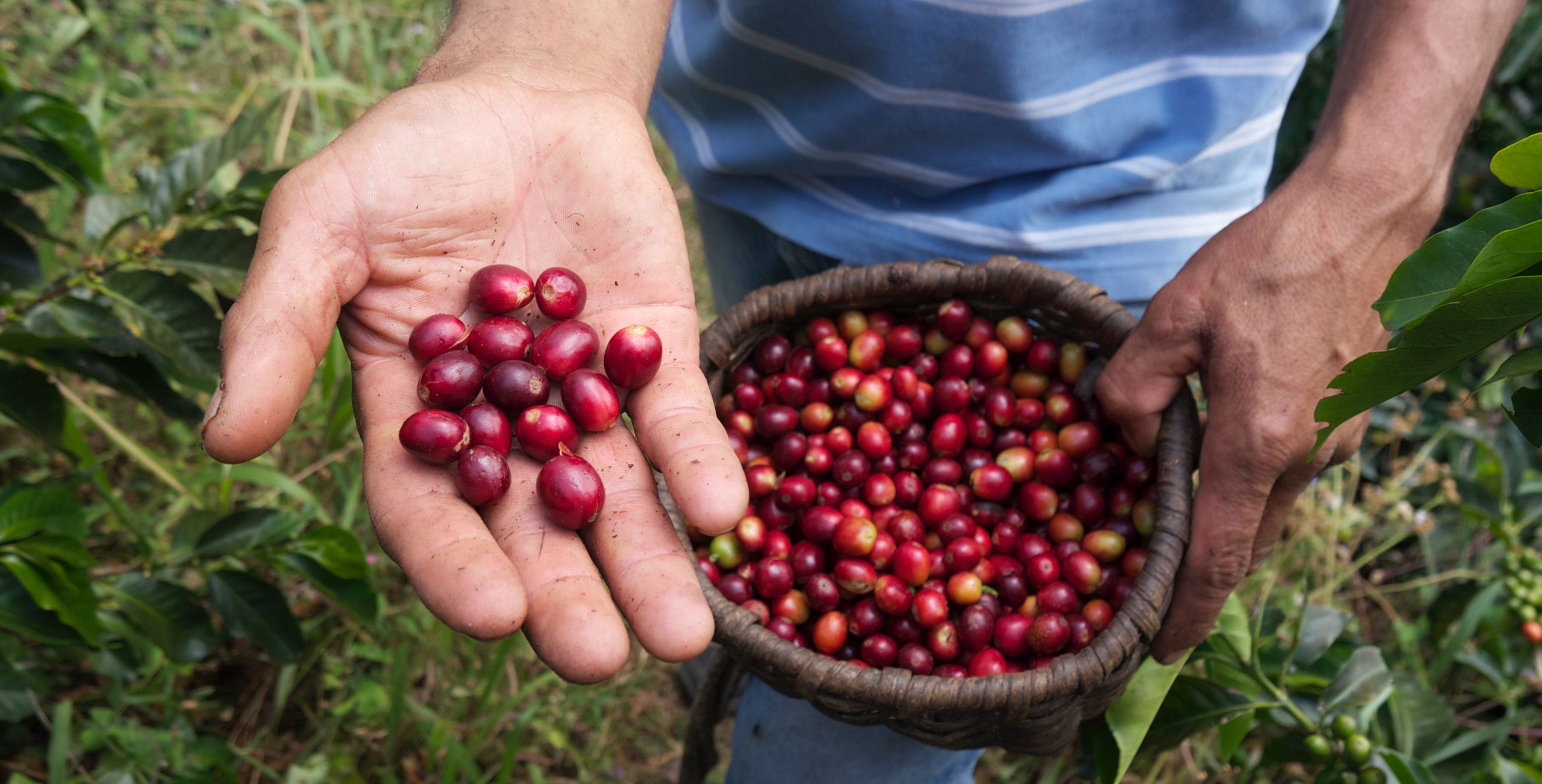
The two-track dirt path to María Leticia Giraldo Marino’s coffee farm was lined with birds. Every few feet there was another wooden plaque adorned with painted papier- mâché bird art.
“Birds come here all the time, so I paint them as I see them,” Marino said. “They’re my inspiration.”
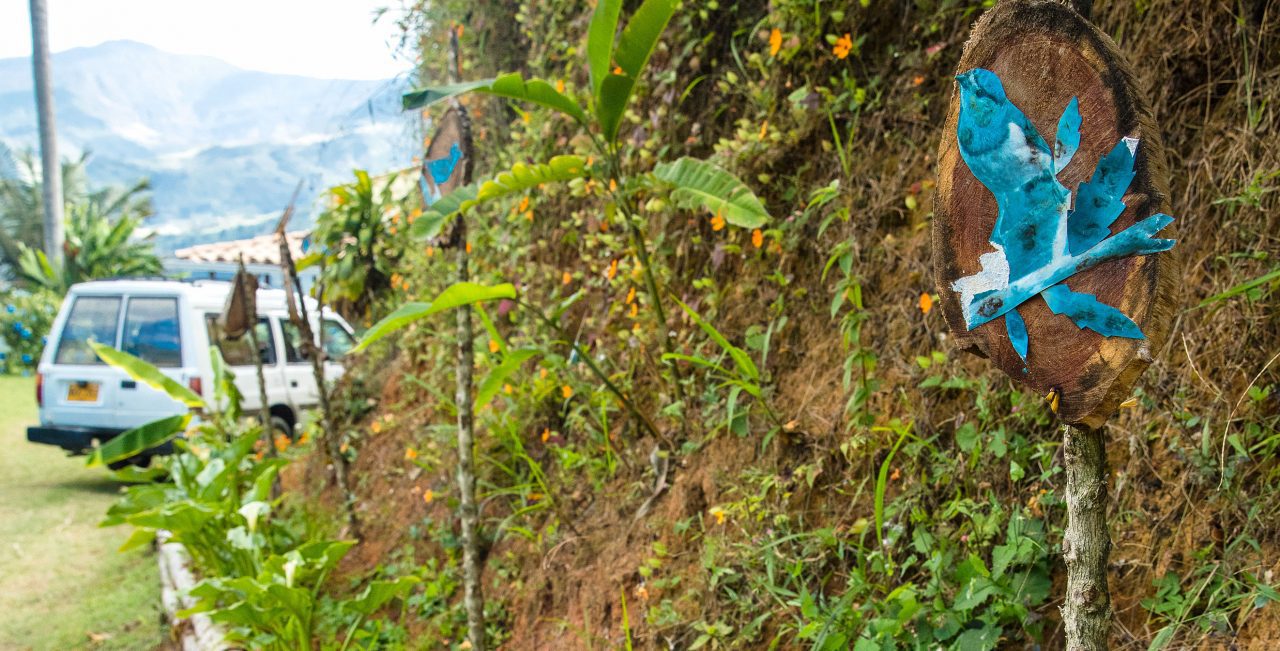
She was a Colombian grandmother with a warm smile who was quick to serve her guests a tinto con panela (black coffee sweetened with small chunks of unrefined sugar). And she was deeply proud of her 5-acre family finca. The farmhouse was a tidy and simple single-story casa of terra cotta and corrugated metal with a million- dollar view, perched so high on this Andean mountainside that Black Vultures soared in circles down below.
Beside the farmhouse there was a rock wall with a shrine in the center, and more birds—in the form of small sculptures—surrounding the Virgin Mary.
“Birds are everywhere here,” said Jaime de Jesús Bustamante Montoya, a field hand on Marino’s farm. “They keep me company when I’m out in the bushes picking coffee.”
After coffee, Rodewald set off with Montoya to clamber through the coffee bushes up and down those steep slopes on another bird survey. They were joined by an economist in spectacles—PhD-candidate Juan Nicolás Hernandez- Aguilera of Cornell University’s Dyson School of Applied Economics. This wasn’t a typical bird count. This time, Rodewald was merging her research with work by Miguel Gomez, a Dyson professor and Hernandez-Aguilera’s advisor, for a multidisciplinary project for Cornell’s Atkinson Center for a Sustainable Future.
The idea is to get a holistic view of coffee and agroforestry (farming in a forest setting) through different lenses, ecologically and socioeconomically. The hypothesis is that specialty coffee—the good stuff, not the commodity coffee sold in large canisters at the grocery store—can be better for everything, if it’s grown sustainably.
Sustainability is often accused of being a squishy word. The Atkinson project seeks to draw clear lines to the benefits of sustainable coffee farming. This region in the heart of the Colombian coffee belt is the perfect place to study such a thing, because the local coffee cooperative (De Los Andes Cooperativa) is specializing in sustainable, specialty coffee.
In the 1990s, a collapse in commodity coffee prices hit Colombia hard—half of the country’s coffee market value vanished, and thousands of families in coffee-growing regions were pushed into poverty. As a strategy for the future, De Los Andes Cooperativa began encouraging and supporting farms to grow higher-quality beans that qualify for the specialty coffee market, where prices tend to be higher and more stable. To further differentiate its coffee, the cooperative helped 20 farms attain Rainforest Alliance certification to identify their beans as sustainably grown, specialty coffee. For those farms, that meant resisting the urge to clear forest for coffee and planting new trees.
As with most things sustainably grown, the benefits can’t be found in a single year’s accounting ledger. Cooperative buyers say coffee grown under trees tends to meet specialty standards (the natural leaf litter imparts a richer flavor), but farmers see a lower yield than with sun-grown coffee, so any profit from higher prices can be eaten up by sending less coffee to market.
The Atkinson project is measuring the long-term benefits for farmers from the sustainable, specialty coffee model, in order to evaluate whether it’s truly a better alternative to the volatile global commodity coffee market.
So far Hernandez-Aguilera and his team of locally hired Colombian college students have interviewed owners and workers at 265 small coffee farms in this region. They have consistently heard that some of the trees planted on these farms (such as avocado and plantain) also provide food to households to offset their grocery bill, and that coffee plants grown under trees produce beans longer (15 years) than sun-grown coffee plants (5 years), which saves money in replacing coffee plants.
Hernandez-Aguilera’s interviews have also surfaced a number of environmental benefits. Farmers say they’re using less chemicals (the natural leaf litter under trees lessens the need for synthetic fertilizers), which is cheaper for farmers and healthier for workers and local water supply. They say landslides have been less common in the last 15 years, which could be due to the greater number of trees on slope-side coffee farms that are locking in soil.
But none of these ecosystem services can be easily quantified for an economist’s model. That’s where Rodewald’s bird surveys come in. She has helped train young Colombian ornithologists to count birds on the farms they visit, so Hernandez-Aguilera can use the bird counts as an indicator of healthy biodiversity in his evaluations of coffee-farm conditions.
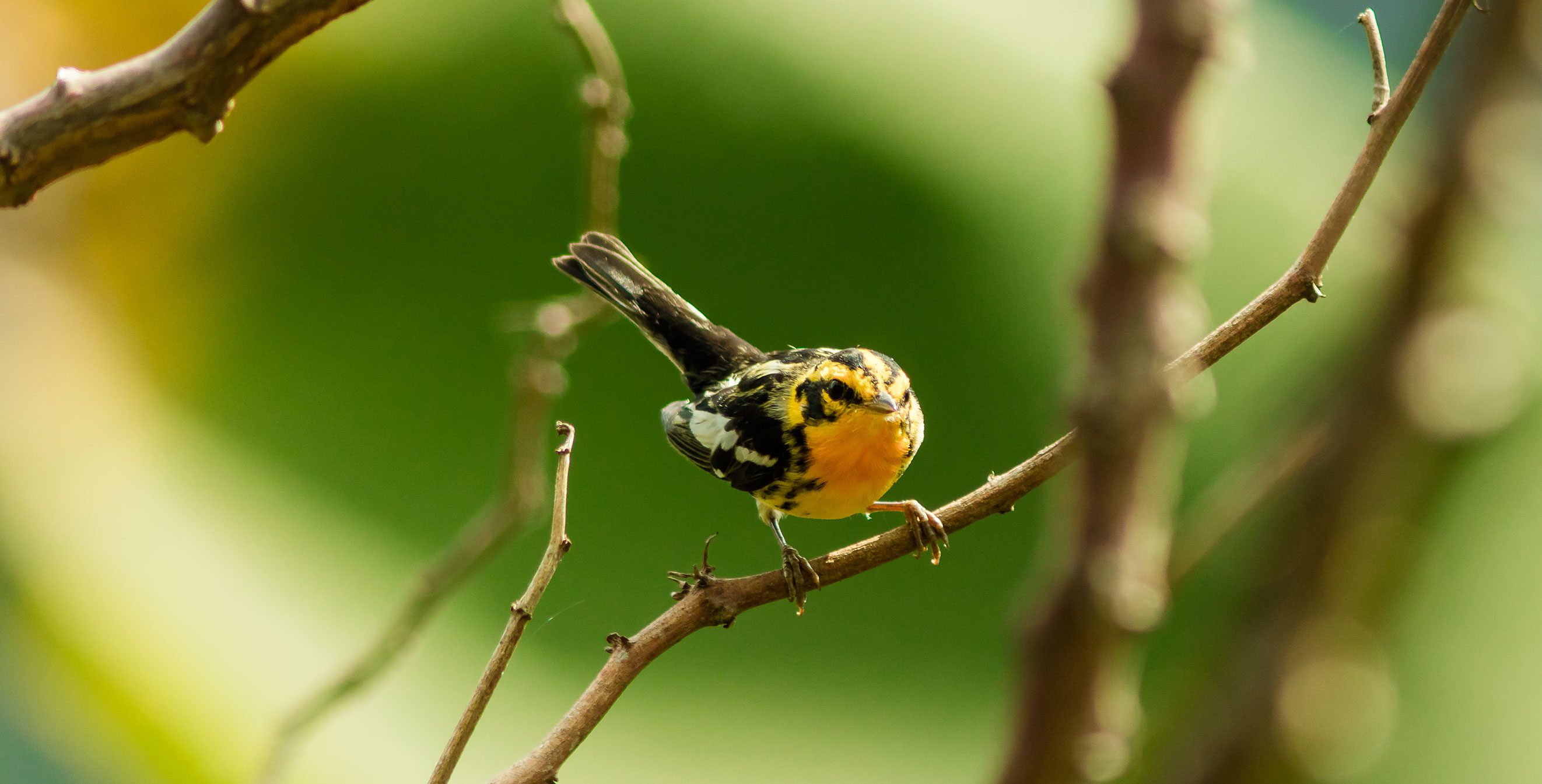
A Blackburnian Warbler was present on Maria Marino’s farm on this day. When I wandered over to a ridge to enjoy the view, the blackburnian dashed out of some remnant forest on the edge of the coffee bushes and landed in a banana tree. (See the eBird checklist from the day.) It’s a bird I’ve seen in Minnesota and Maine, ducking in and out of spruces. Its face wasn’t as fiery as I recalled, more of a washed-out orange. But the bold black mask was intact. And now here we both were, 2,500 miles from home. Except that that Blackburnian Warbler may consider Colombia more of a home than North America. It spends twice as much time here (about five months of the year) than it does on its breeding grounds up North.
End of Transcript
Blackburnian Warblers are the most frequently sighted migrant species in Rodewald’s surveys in this region, found in 89 percent of bird flocks on shade-coffee farms. But not all those farms fit the ideal prescription for bird habitat. This farm had a portion of the property set aside as forest (which allowed it to qualify for Rainforest Alliance certification), but not much for taller canopy trees over the coffee bushes (which it would need for Bird-Friendly certification).
“The Bird-Friendly standards are the best for birds, no doubt about it,” said Rodewald. But, she said, more habitat is needed. Several Neotropical migrants—including Golden-winged, Cerulean, and Canada warblers—spend winter in Colombia’s Antioquia region, where there aren’t any Bird-Friendly certified farms. Rodewald hopes her research can crack open the flow of bird-conservation and sustainability incentives a bit wider, so more coffee farms can be encouraged to play at least some role in stemming the overall loss of forests from Mexico to South America. In her studies, she has shown that canopy cover as low as 25 percent can still host large flocks of migratory birds, and that coffee farms that make even small habitat improvements—even just planting a few trees per acre—can greatly increase bird abundance.
“Sure, it’s always better if a coffee farm keeps lots of standing trees. More trees are always better,” Rodewald said. “But everything counts. A bunch of small coffee farms with at least some trees can make a difference at a landscape scale for birds.”
Small family farms make up 95 percent of the coffee producers in Colombia. And the economic pressures on these families are tremendous. For many, organic certifications are unattainable, whereas modest financial incentives might push them to at least put more trees on their farms.
“We need to recognize that in places like Colombia, people have to make their living and support their families,” Rodewald said. “And everything counts. It’s the same thing I tell people back in the U.S. If you can buy coffee of the highest standards, that’s great, do that. But if you can’t, it’s not worth giving up completely.
“For coffee growers and coffee drinkers, anything we can do, any little shift in the choices we’re making, counts for something.”

“Birds are everywhere here. They keep me company when I’m out in the bushes picking coffee….I hope that [Americans] continue to send us pretty birds.”~Jaime de Jesús Bustamante Montoya
Coffee farm field worker, Antioquia, Colombia.
“I would say that birds have a role in the coffee plantations, because the birds, the majority of them eat insects. So, they carry out their roles in controlling the insect population. If it weren't for the birds, in that sense, the pests would be more intense.“ ~Gustavo Suarez
Conservation scientist and former coffee farm worker, Antioquia, Colombia.
“If there are more trees on a coffee farm, there will be less production but it will be of a better quality…[because] the nutrients administered by the trees give the coffee a unique fragrance…It gives the coffee more taste, more force.” ~Francisco Javier Velazquez Budelo
Administrator, De Los Andes Cooperativa, Antioquia, Colombia.
“Coffee production is a responsibility for all, because if I, as a consumer at the end of the line, don't pay for a good quality coffee, then surely, whoever is producing it will not want to produce it the right way.” ~Fernando Restrepo Jaramillo
Director de Desarrollo Social, De Los Andes Cooperativa, Antioquia, Colombia.
“We’d like to tell coffee drinkers in the U.S. to continue purchasing our product. We are very happy to make it, we are very dedicated and proud to make it. To those who haven’t considered certifications as important to [coffee], I’d say that we are committed to delivering a high quality product with a great deal of work, which makes the difference between those who don’t have the seals of approval and those who care for the environment.”~Isabel Cristina Echeverri Restrepo
Administrator, Finca Los Arrayanes coffee farm, Antioquia, Colombia.
“For the peace process in Colombia, this is our special moment, when many policy makers and institutions are turning to the agriculture sector. The specialty coffee markets give opportunity to new generations in rural areas, so they are not going to alternative activities that in Colombia could be illegal drug activities. It’s a great opportunity, but it needs the support from the consumer side. And it’s important that consumers know that when they drink higher quality coffee, they are also probably supporting good outcomes, in terms of environmental protection and better social conditions. If American consumers are conscious about that, this can affect Colombia in a very positive way.”~Juan Nicolás Hernandez-Aguilera
PhD student in applied economics, Cornell University.
Photos: Chris Foito/Cornell Lab Multimedia.
At the end of the week, I broke away from the Cornell researchers to visit Veronica Sanchez’s family coffee finca.
I had met Sanchez a few days earlier at the cooperative office in the village of Andes. At the time she struck me as the town’s trendsetter, dressed as if she might be heading out to the discoteqa with her friends that night. Upon hearing that I was an American interested in learning about coffee, she invited me to her family’s farm. She said they had never spoken to somebody who, at least hypothetically, could be drinking their coffee. They have no idea where exactly their farm’s beans go after delivery. They only know that the cooperative ships to 17 countries across North America, Europe, and Asia.

Veronica Sanchez and her family live on a rustic coffee farm high in the mountains. 
Veronica is the fifth generation of her family to work this coffee farm. She aspires to someday running her own organic coffee farm. 
Veronica's famliy uses an antique depulping press to extract the beans from the coffee berries. 
Natural pest control methods are used to control coffee borer beetles. 
Generations of Veronica’s family have preserved a stand of forest that contains a natural spring, which provides all of the water for their farm. Photos by Chris Foito/Cornell Lab Multimedia.
I had no idea that my visit would mean hiring a guide with a four-wheel-drive jeep, which would crawl for over an hour up and down a winding road so rocky and precariously etched into the side of the mountain that I thought for sure it was a donkey path. When I unsteadily stepped out of the jeep, Sanchez came striding down a path in a bright red tank top and Converse canvas high-top sneakers with that same happy-go-lucky way about her. But this finca had a different feel.
It was a farm clinging to the highest reaches of this mountain, on the sheer edge of poverty. The home was an L-shaped structure of four windowless, shadowed rooms; in one room an elderly, infirm family member was slumped over, asleep in a wheelchair. Sanchez’s mother and various aunts and uncles and cousins bustled about, doing chores. Shattered cinder blocks were strewn about at the base of a weathered, old box shrine for the Virgin Mary.
After offering me a bottle of soda, Sanchez took me on the promised tour by outbuildings of rotting concrete. In one building she showed me a handcranked depulping press, similar to an antique I had seen in a museum in town. “It’s old, but it still works,” she said.
A bit farther up the path, we reached the spine of a ridge above a forested draw. “That’s where all the water for this farm comes from,” she said. Generations of her family, dating back to her great-great-grandfather, have left the trees there to protect the water, “so it keeps flowing,” she said.
A few recently planted avocado and plantain trees stood above the rows of coffee bushes. From one branch a plastic bottle hung on a string, looking like an ornament—but it was actually an integrated pest management device. Sanchez showed me how a little baggie of ethyl alcohol suspended inside the bottle lured coffee borers, and a solution of soapy water on the bottle’s bottom drowned the bugs.
“We don’t use any herbicides or pesticides,” she said. “I’m completely against fumigation for borer beetle, because while killing the borer beetle we are also poisoning the coffee.”
The bottle trap is a technique Sanchez learned at the Technological Institute of Antioquia, where she’s enrolled on a government scholarship. In our conversation, she spoke like an agronomist, weaving from how the trees they’re planting among the coffee bushes will retain humidity to how they’re fostering the soil’s microbiotic community. I ask her where her environmental ethic comes from, and she says, “from the bad practices around us,” casting a disgusted glance at the coffee farm on the facing ridge, a converted sun-grown monoculture that looks a bit like an Iowa cornfield turned sideways.
“He is only thinking of his pockets.”
And so I’m surprised when I learn that, despite all of her organic-like efforts, her family gets the lowest price for their coffee at the cooperative. Her family’s farm failed a Fair Trade certification evaluation last year, due to the lack of a septic system, which her family can’t afford.
Why?, I ask Sanchez. Why do all this, preserving and planting trees and messing with plastic bottle traps, and forgo the money in the here-and-now that her neighbor is getting?
“We use good practices and we have a peace of mind knowing we are producing something of organic quality,” if not certified organic, she said.
“If we apply poisons to the coffee, we also poison the animals from the land and sky, such as insects and birds, and in turn we pollute the water.” And that affects everything from her family to the people who drink her coffee, she said.
“Por eso son malas prácticas,” she said. These are malpractices.
On this ridge, Veronica Sanchez was standing on the edge of a $100 billion global coffee market, her family’s burlap sacks thrown into a swirling ocean of 10 million tons of coffee beans. Somewhere on the other side, there are well-intentioned coffee drinkers, maybe in Japan (where certified coffee sales are booming), or the Netherlands (where more than half of all coffee is certified), or the U.S.A. (the world’s largest importer of certified coffee).
Goodwill exists on both sides of the coffee ocean. But somewhere in between, everything Veronica Sanchez pours into her coffee is being lost at sea.
Gustave Axelson is the Cornell Lab’s editorial director.
Making Sense of Coffee Labels
As with any agricultural product, getting to know the backstory behind where your coffee is grown can help you be confident that your money is supporting your values. Here’s a quick primer to what some common labels on coffee bags may mean as far as shade cover and bird habitat: (read more about coffee labels and birds)
 BIRD FRIENDLY coffee is grown on farms certified by scientists from the Smithsonian Migratory Bird Center. This coffee is organic and meets strict requirements for both mature canopy cover and the type of forest in which the coffee is grown. This coffee is guaranteed to support bird habitat.
BIRD FRIENDLY coffee is grown on farms certified by scientists from the Smithsonian Migratory Bird Center. This coffee is organic and meets strict requirements for both mature canopy cover and the type of forest in which the coffee is grown. This coffee is guaranteed to support bird habitat. RAINFOREST ALLIANCE standards for shade cover are less stringent than Bird Friendly, but more than 70 percent of Rainforest Alliance certified farms maintain shade cover, and the standard promotes preserving forest in reserves and along waterways. On farms where forest canopy is not the native ecosystem type, conservation area set-asides of 30 percent or greater are required in the standard.
RAINFOREST ALLIANCE standards for shade cover are less stringent than Bird Friendly, but more than 70 percent of Rainforest Alliance certified farms maintain shade cover, and the standard promotes preserving forest in reserves and along waterways. On farms where forest canopy is not the native ecosystem type, conservation area set-asides of 30 percent or greater are required in the standard. ORGANIC coffee, like other certified organic crops, is grown without most synthetic pesticides and fertilizers. There are no criteria for shade cover, however.
ORGANIC coffee, like other certified organic crops, is grown without most synthetic pesticides and fertilizers. There are no criteria for shade cover, however.- SHADE-GROWN labels often appear on coffee, but this designation has no regulations or certification standards. If you buy shade-grown coffee intending to support birds, you are trusting that the coffee company is telling the truth.
- SPECIALTY means the coffee scores 80 or higher on a tasting scale. It has nothing to do with environmental conditions, though specialty coffees tend to come from small family farms that can nurture higher quality coffee.

All About Birds
is a free resource
Available for everyone,
funded by donors like you
American Kestrel by Blair Dudeck / Macaulay Library
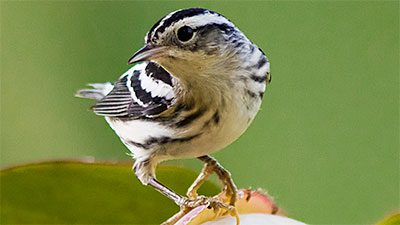


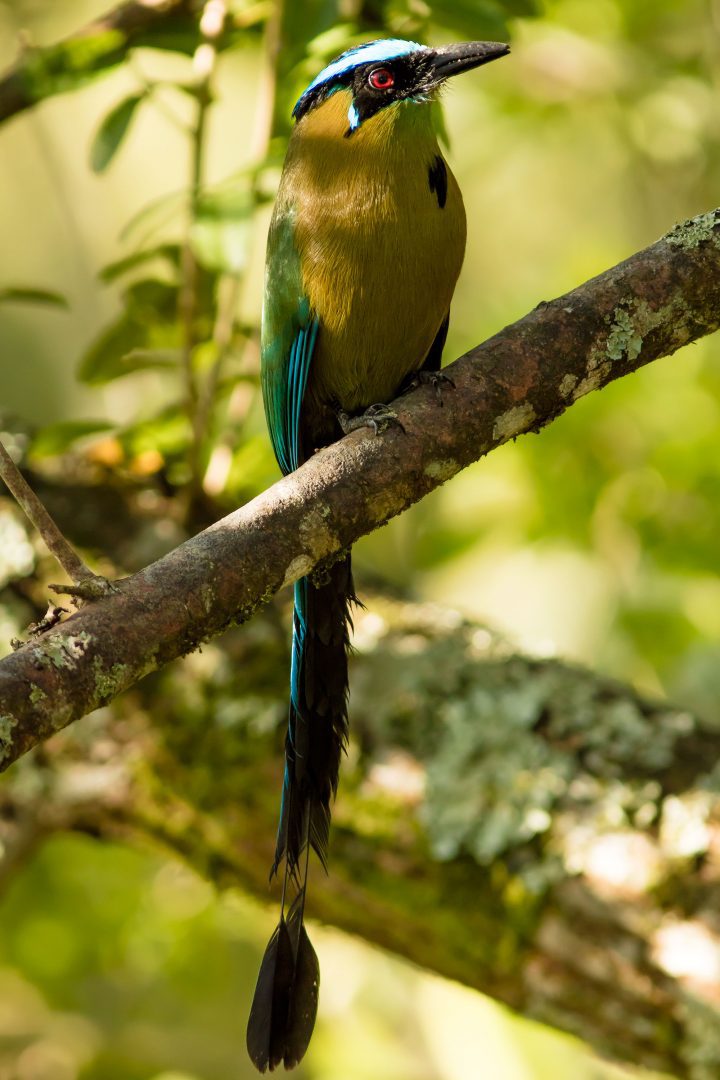
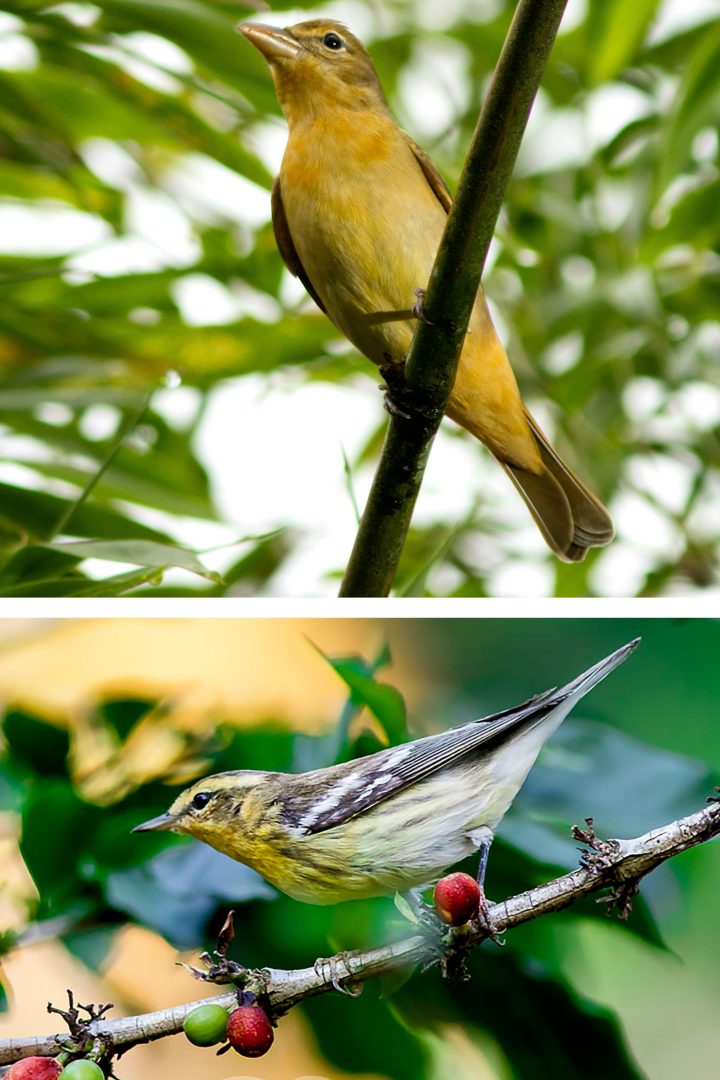
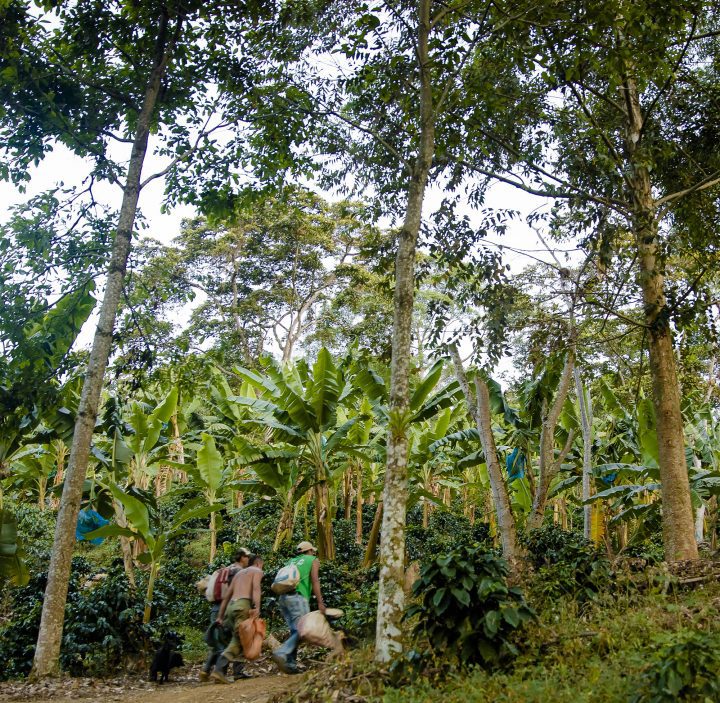
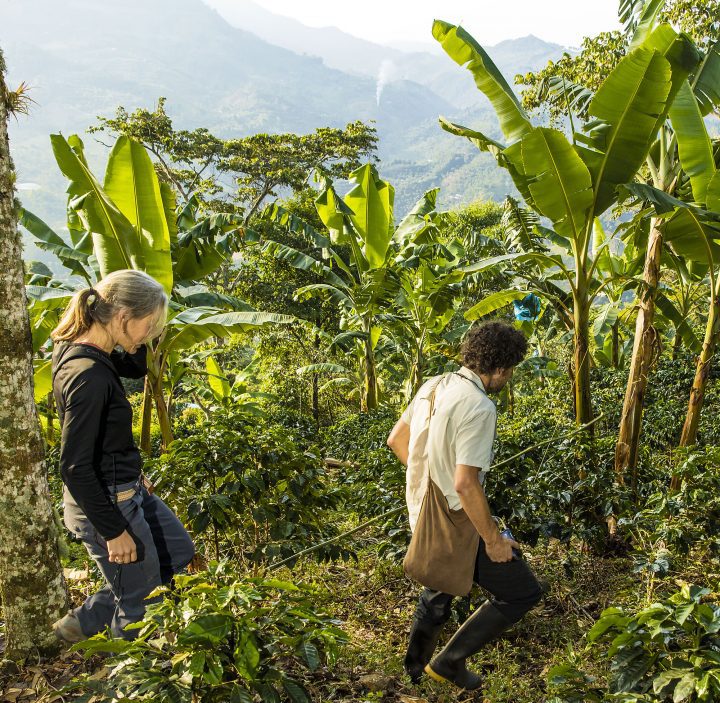
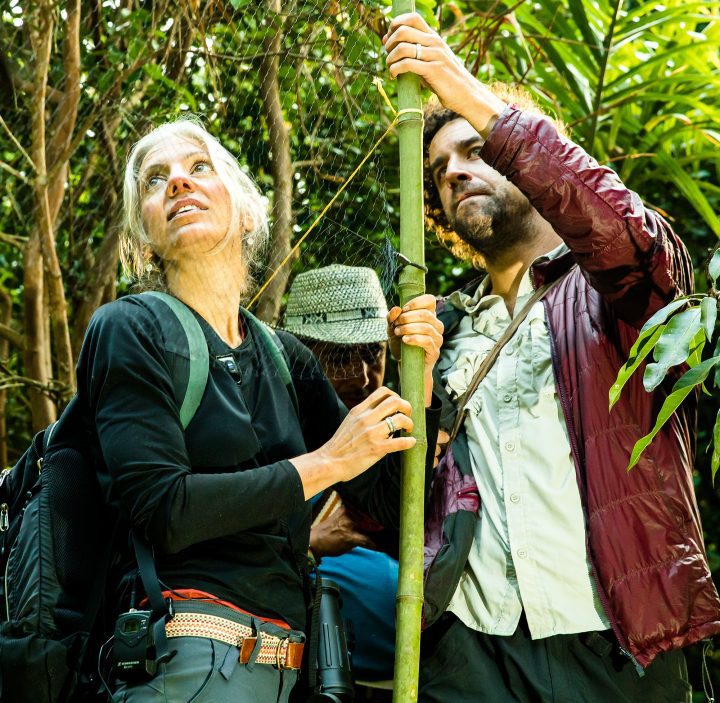
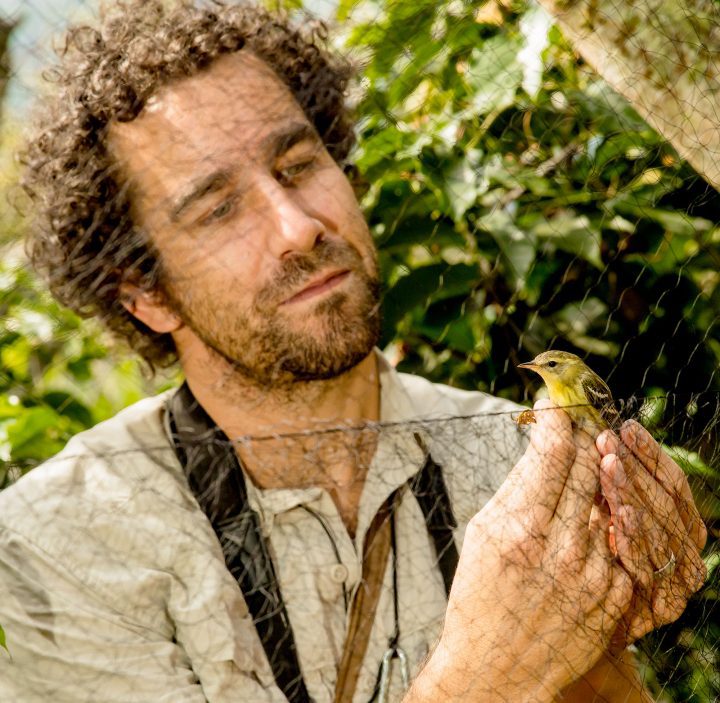
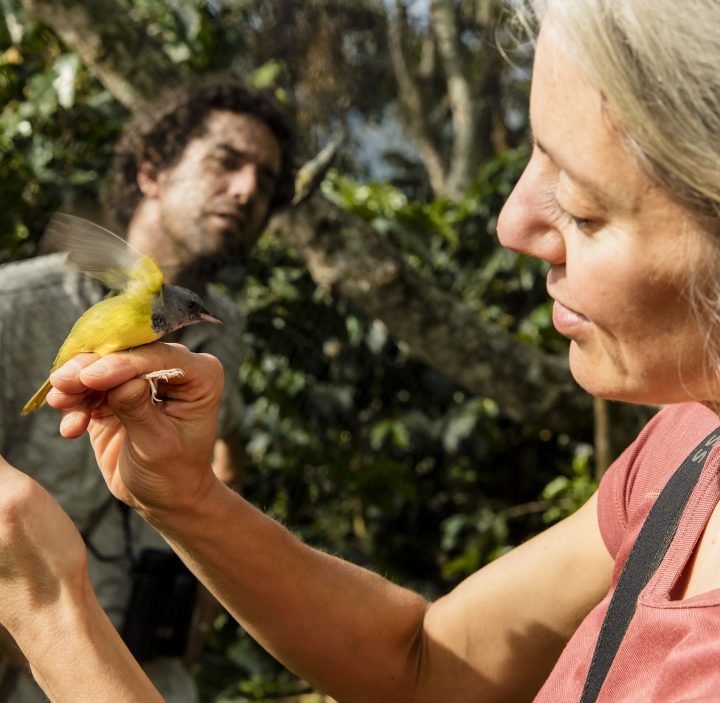
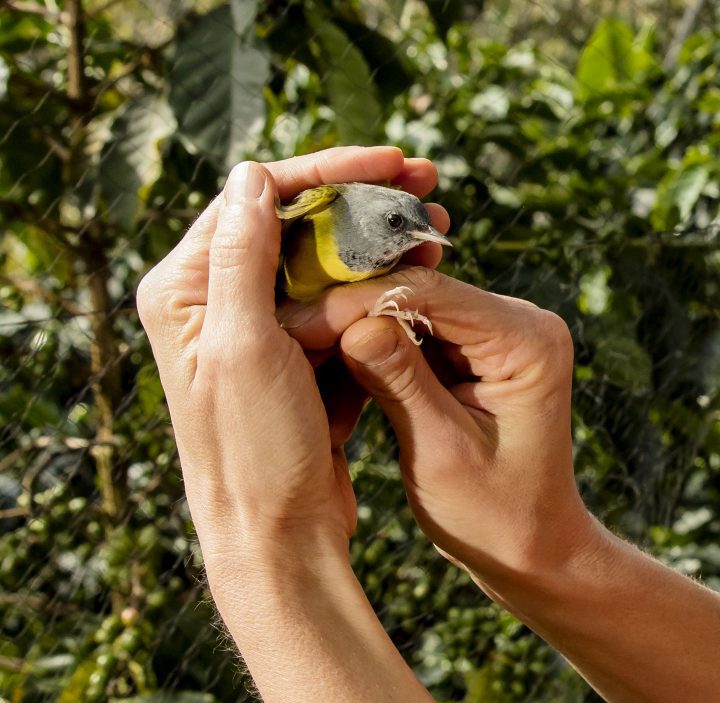
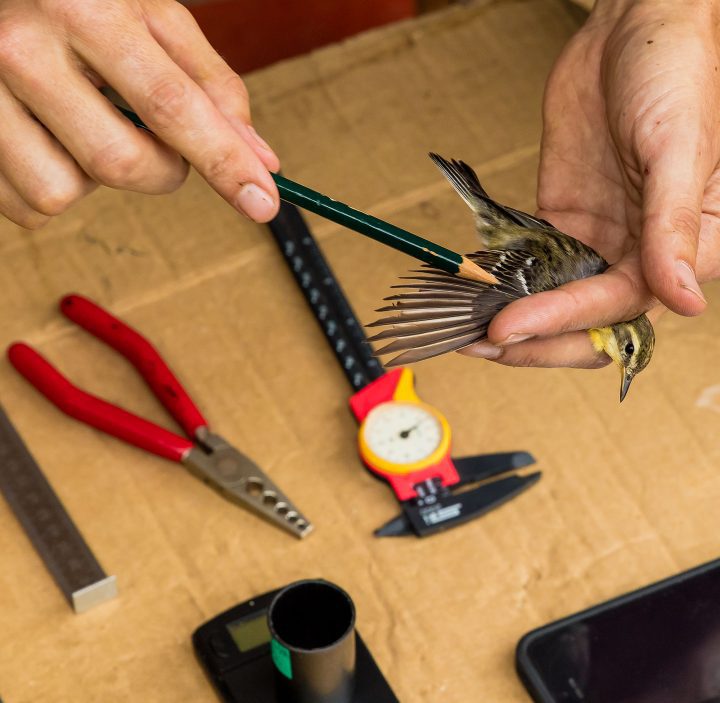
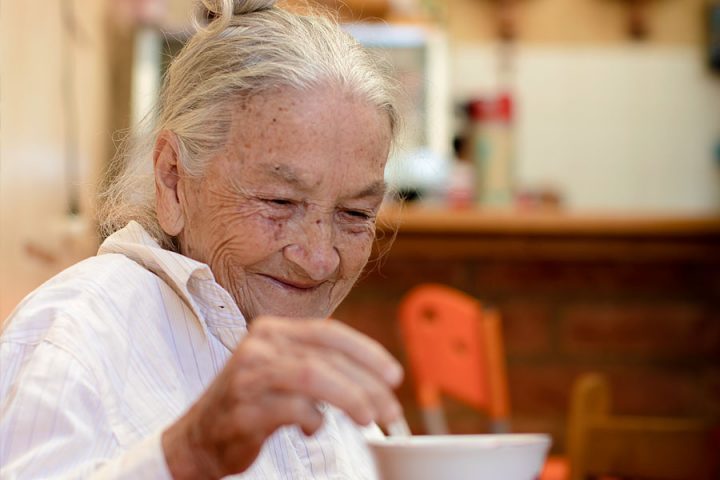
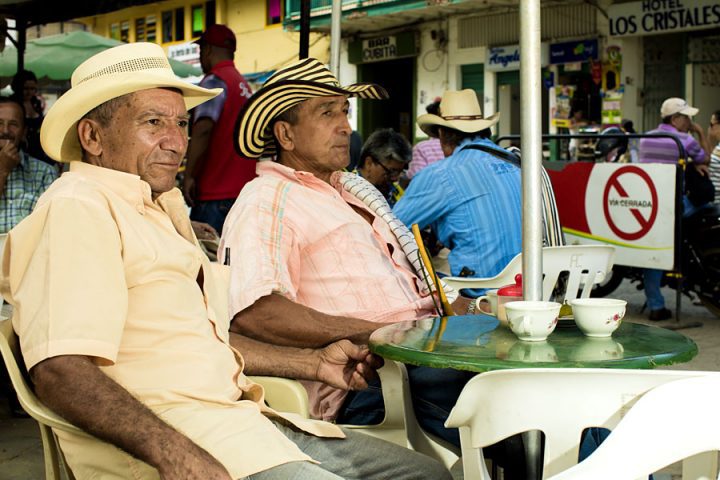
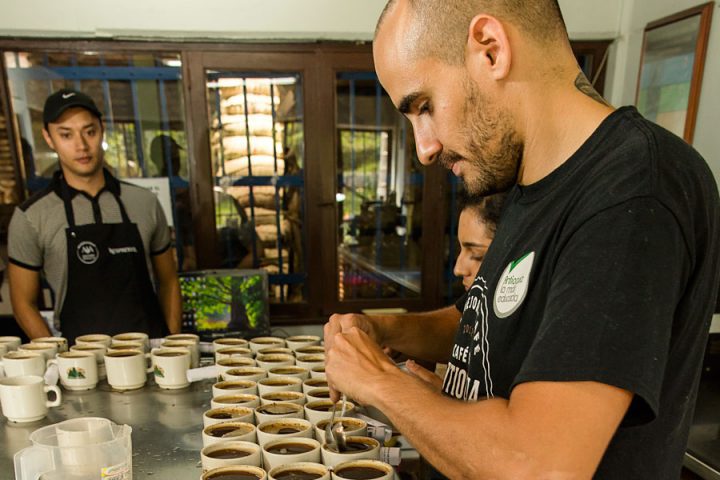
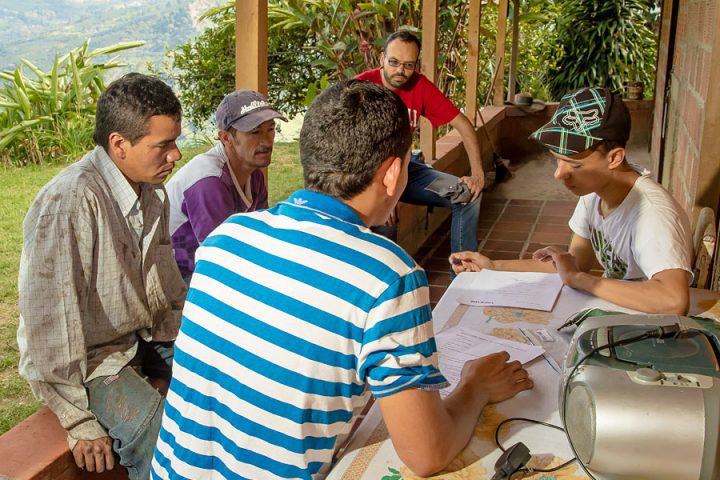
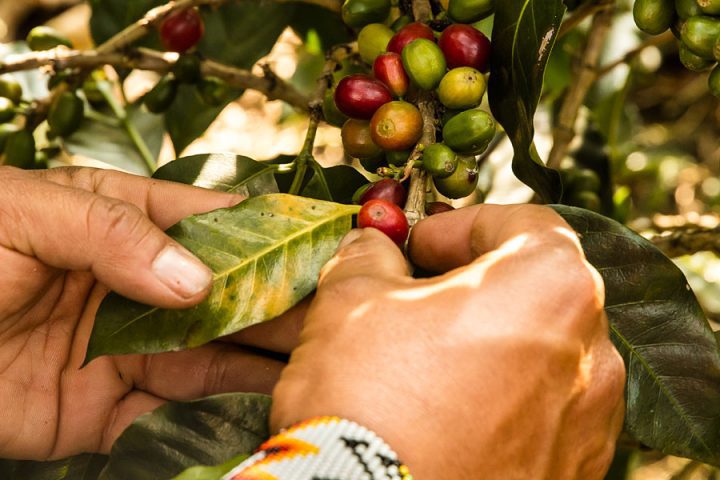
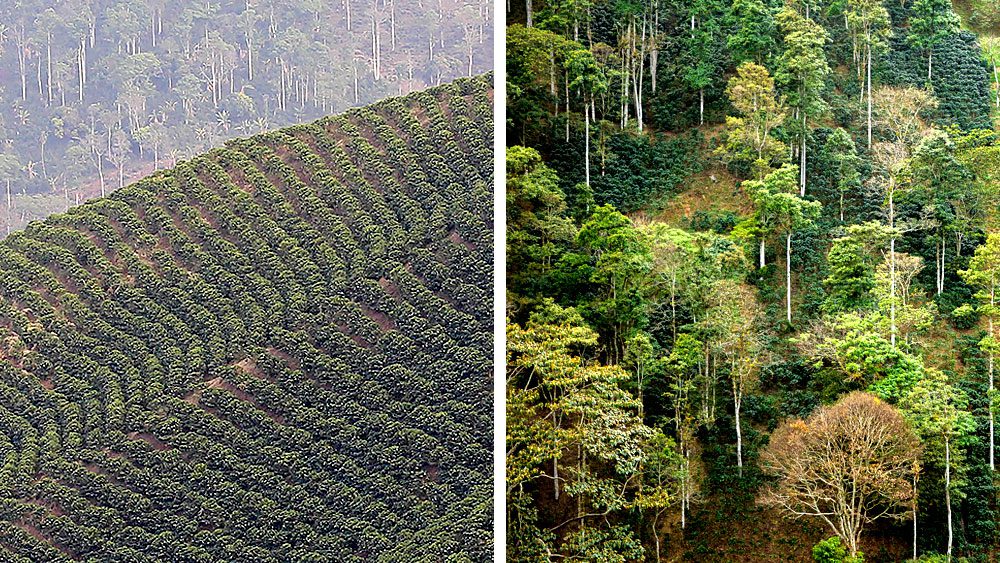
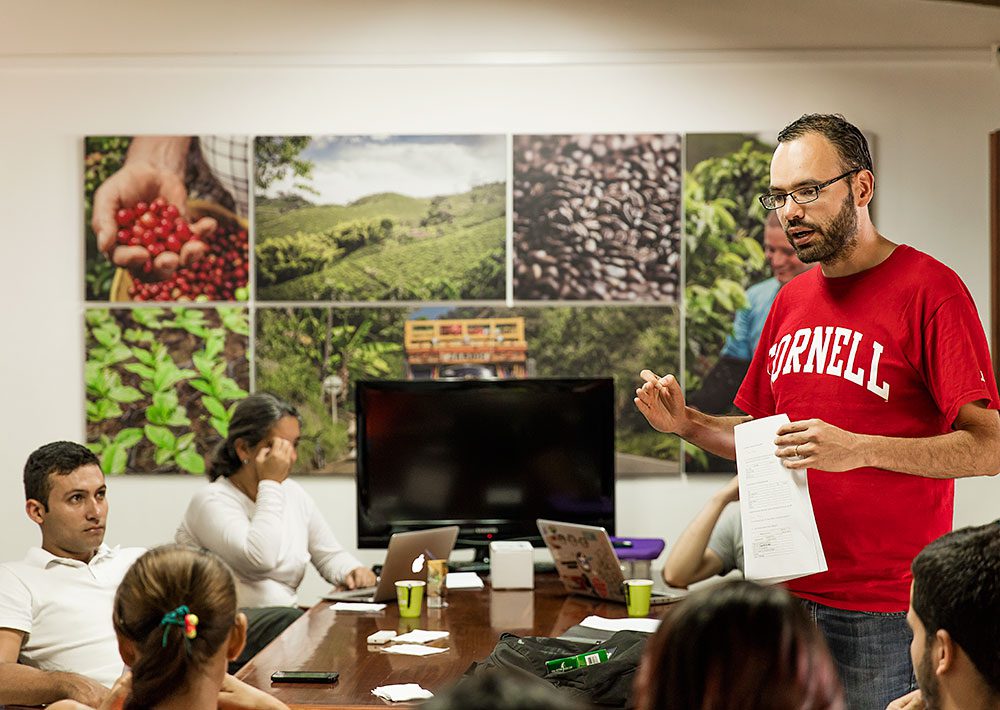
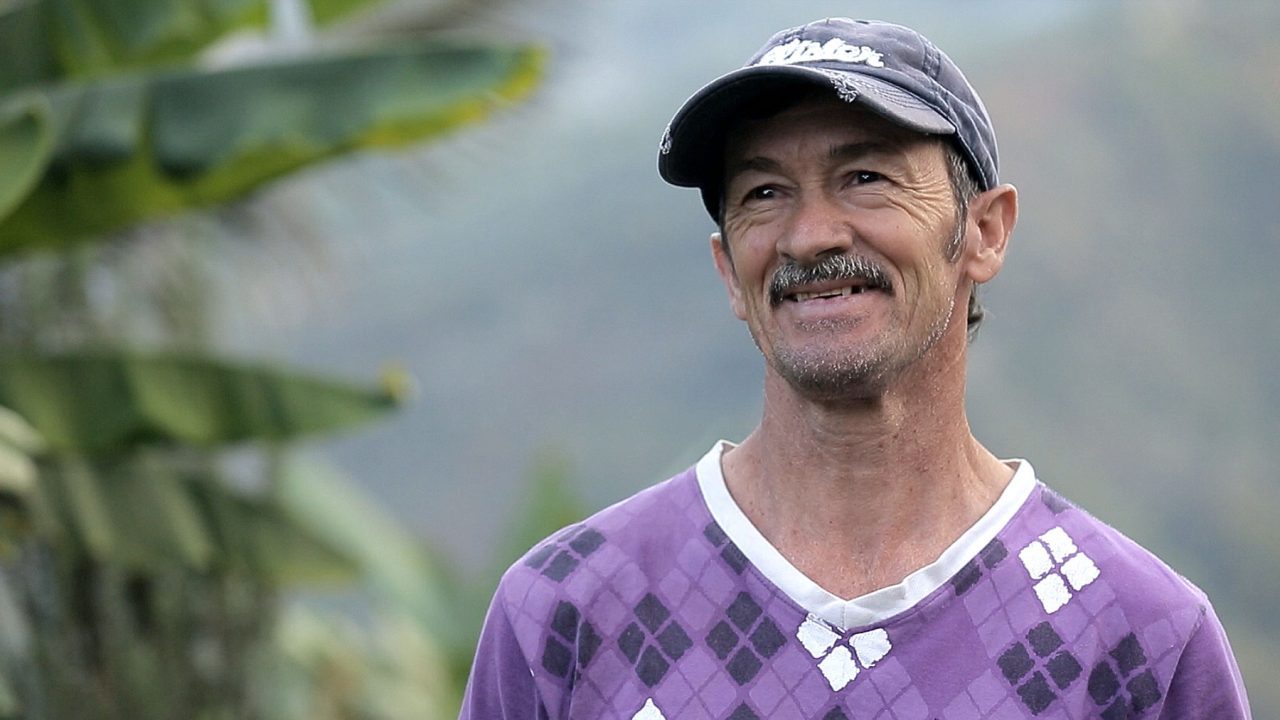
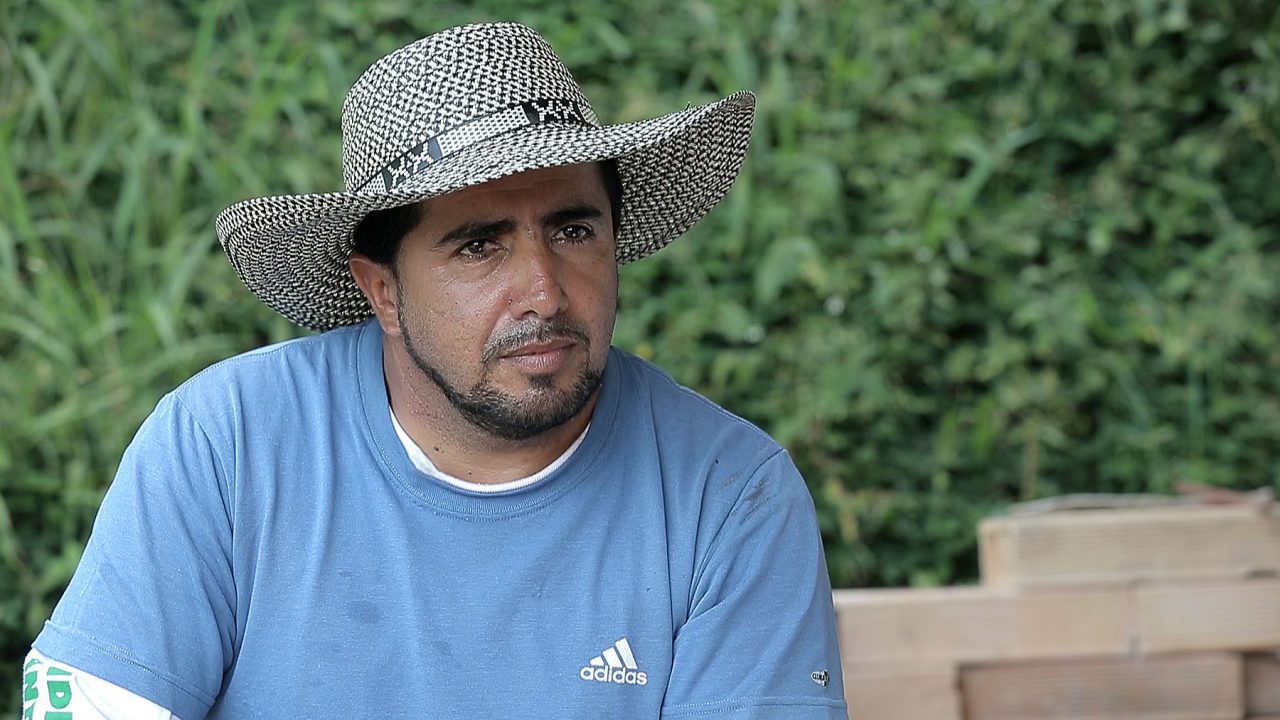
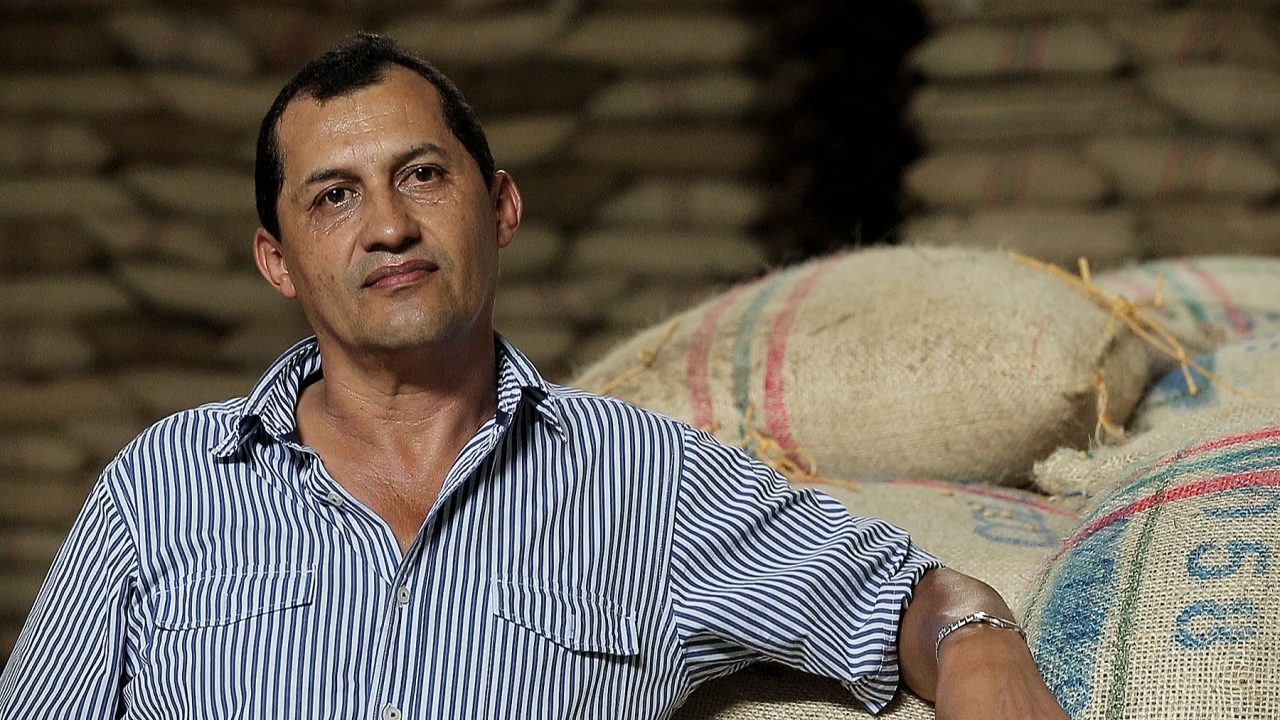
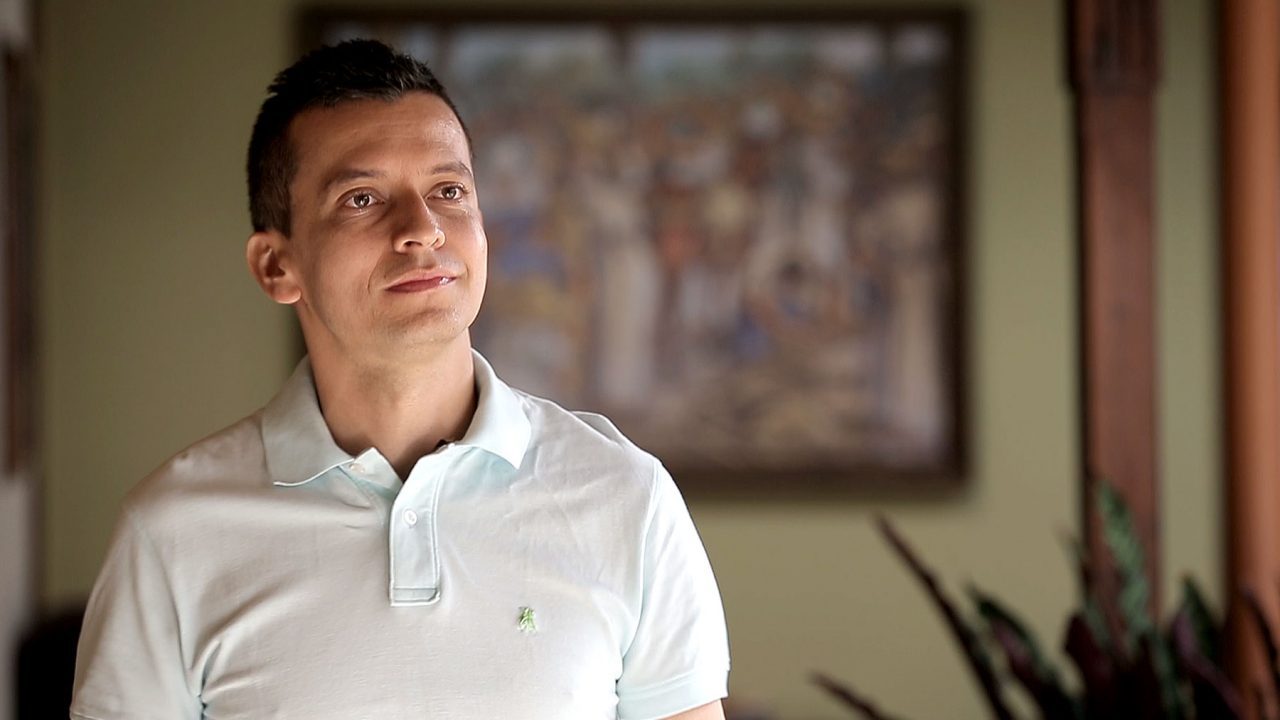
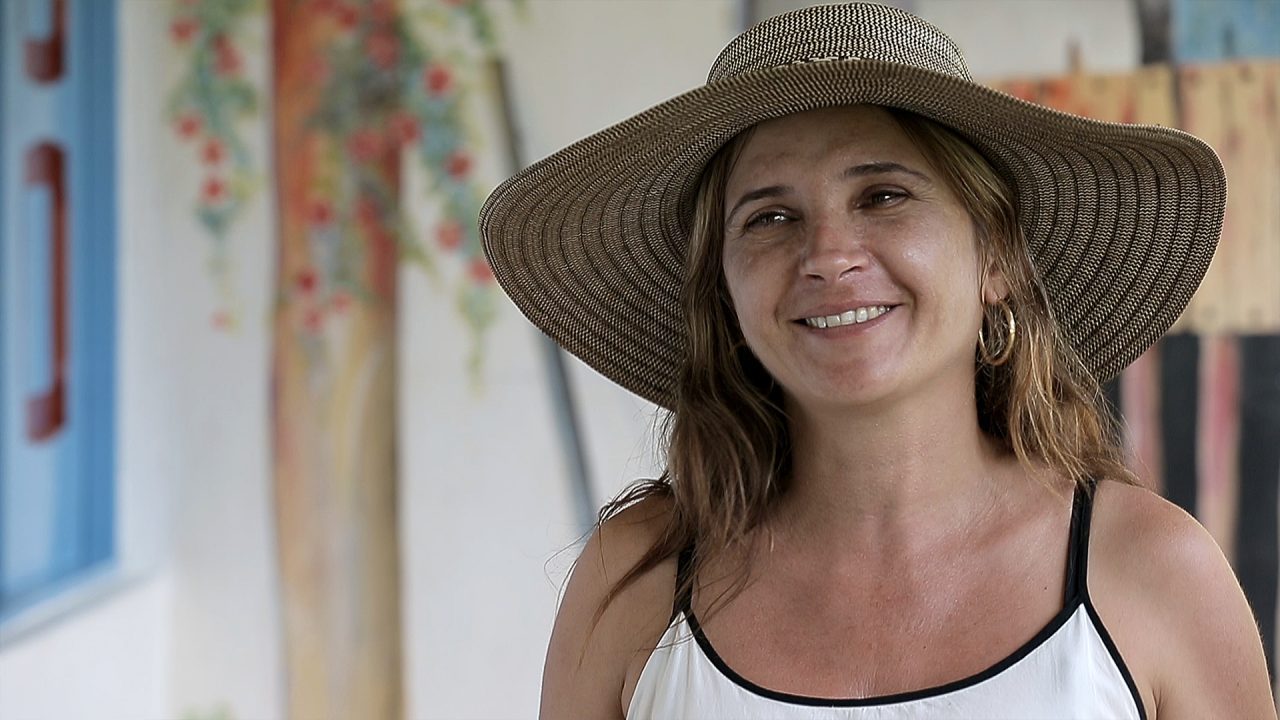
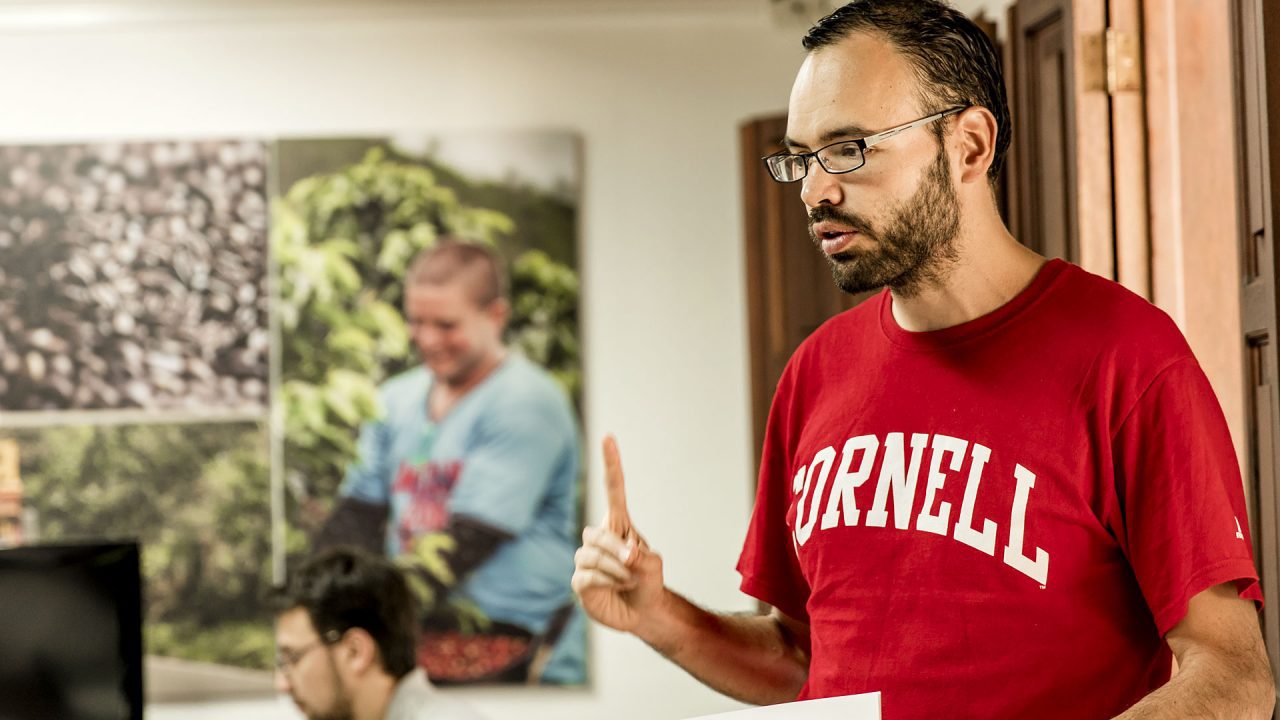
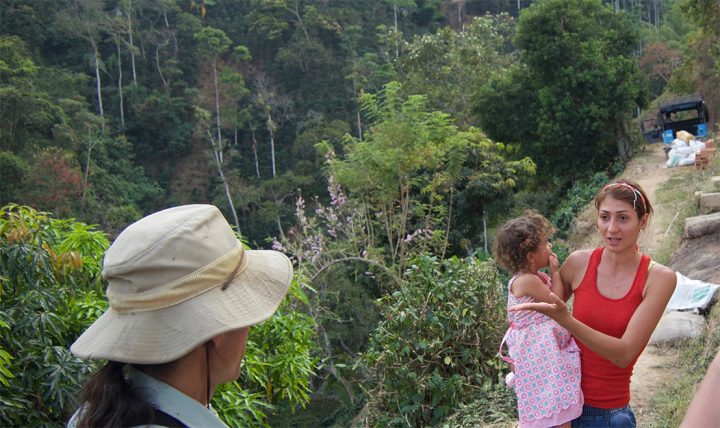
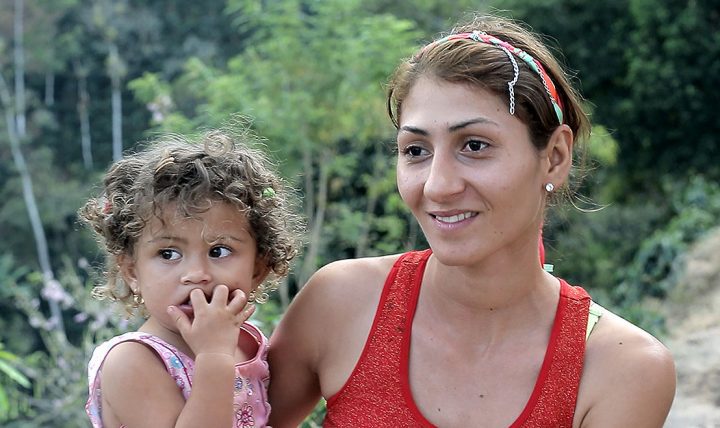
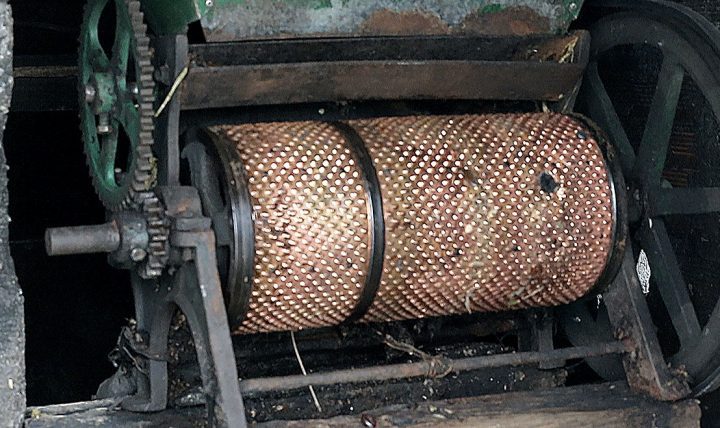
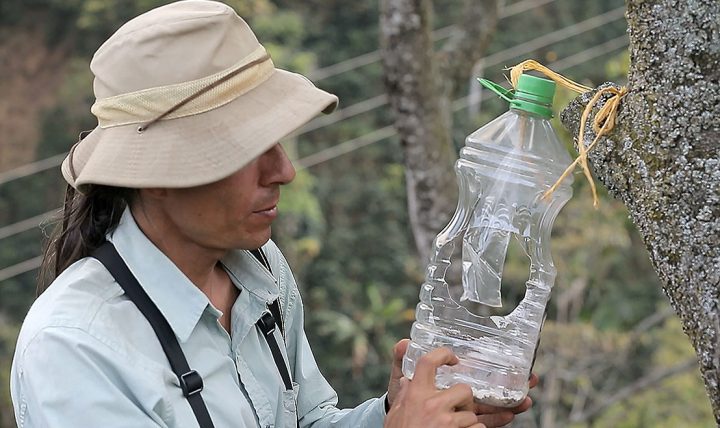
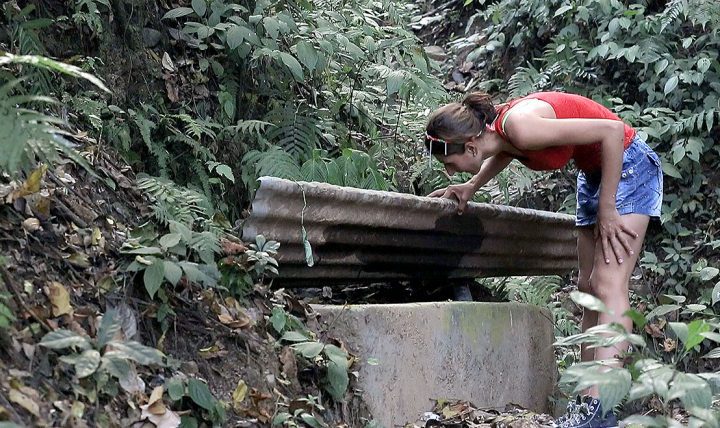
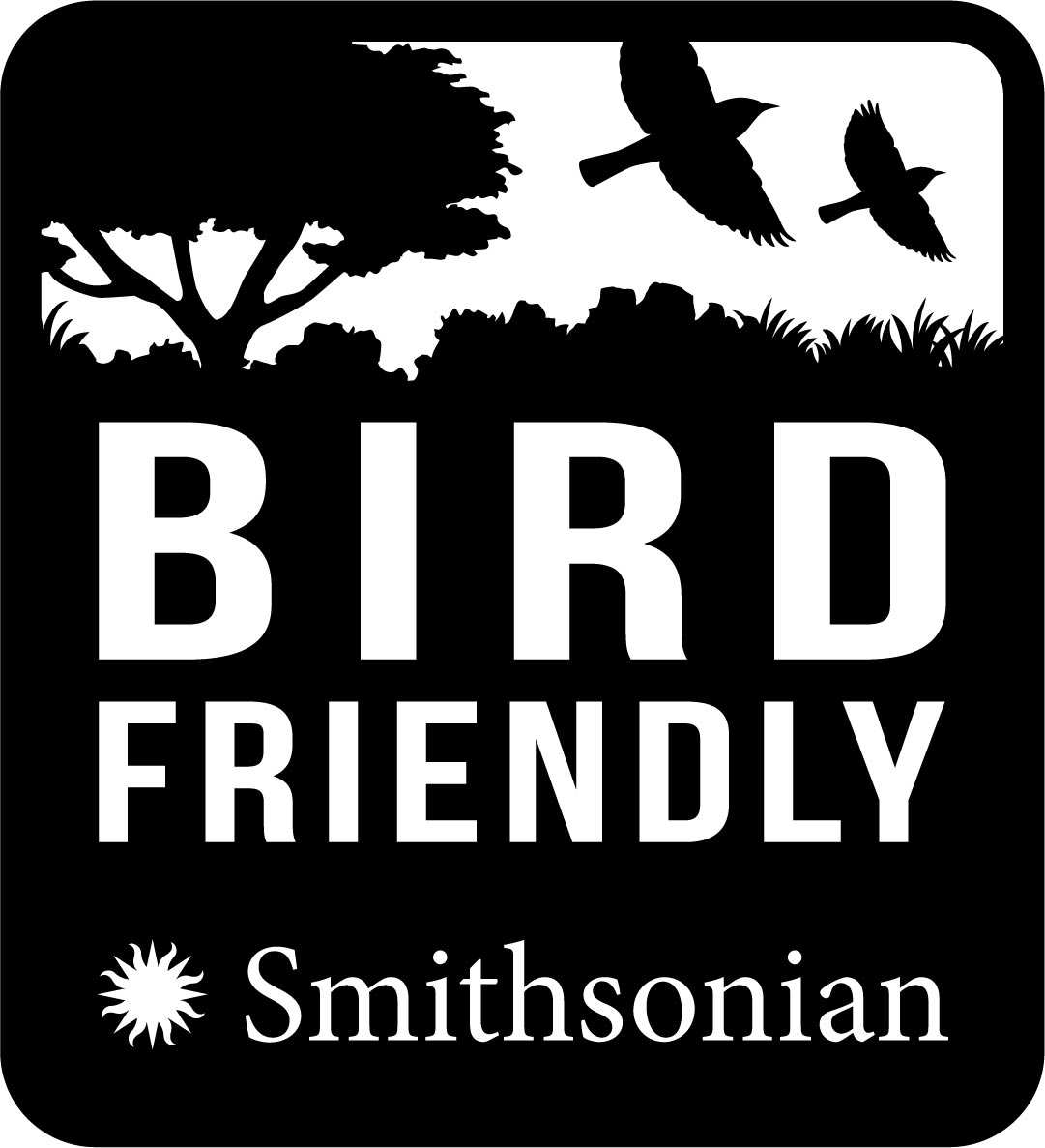 BIRD FRIENDLY coffee is grown on farms certified by scientists from the Smithsonian Migratory Bird Center. This coffee is organic and meets strict requirements for both mature canopy cover and the type of forest in which the coffee is grown. This coffee is guaranteed to support bird habitat.
BIRD FRIENDLY coffee is grown on farms certified by scientists from the Smithsonian Migratory Bird Center. This coffee is organic and meets strict requirements for both mature canopy cover and the type of forest in which the coffee is grown. This coffee is guaranteed to support bird habitat.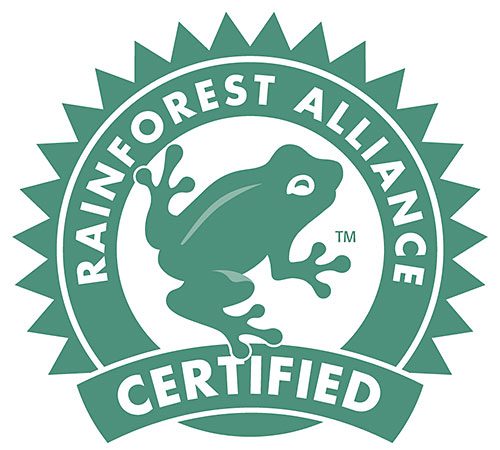 RAINFOREST ALLIANCE standards for shade cover are less stringent than Bird Friendly, but more than 70 percent of Rainforest Alliance certified farms maintain shade cover, and the standard promotes preserving forest in reserves and along waterways. On farms where forest canopy is not the native ecosystem type, conservation area set-asides of 30 percent or greater are required in the standard.
RAINFOREST ALLIANCE standards for shade cover are less stringent than Bird Friendly, but more than 70 percent of Rainforest Alliance certified farms maintain shade cover, and the standard promotes preserving forest in reserves and along waterways. On farms where forest canopy is not the native ecosystem type, conservation area set-asides of 30 percent or greater are required in the standard.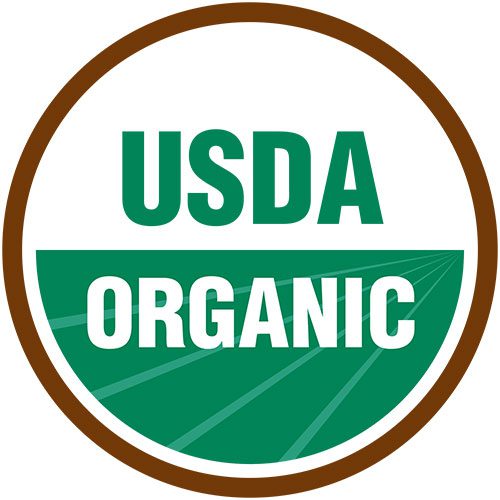 ORGANIC coffee, like other certified organic crops, is grown without most synthetic pesticides and fertilizers. There are no criteria for shade cover, however.
ORGANIC coffee, like other certified organic crops, is grown without most synthetic pesticides and fertilizers. There are no criteria for shade cover, however.